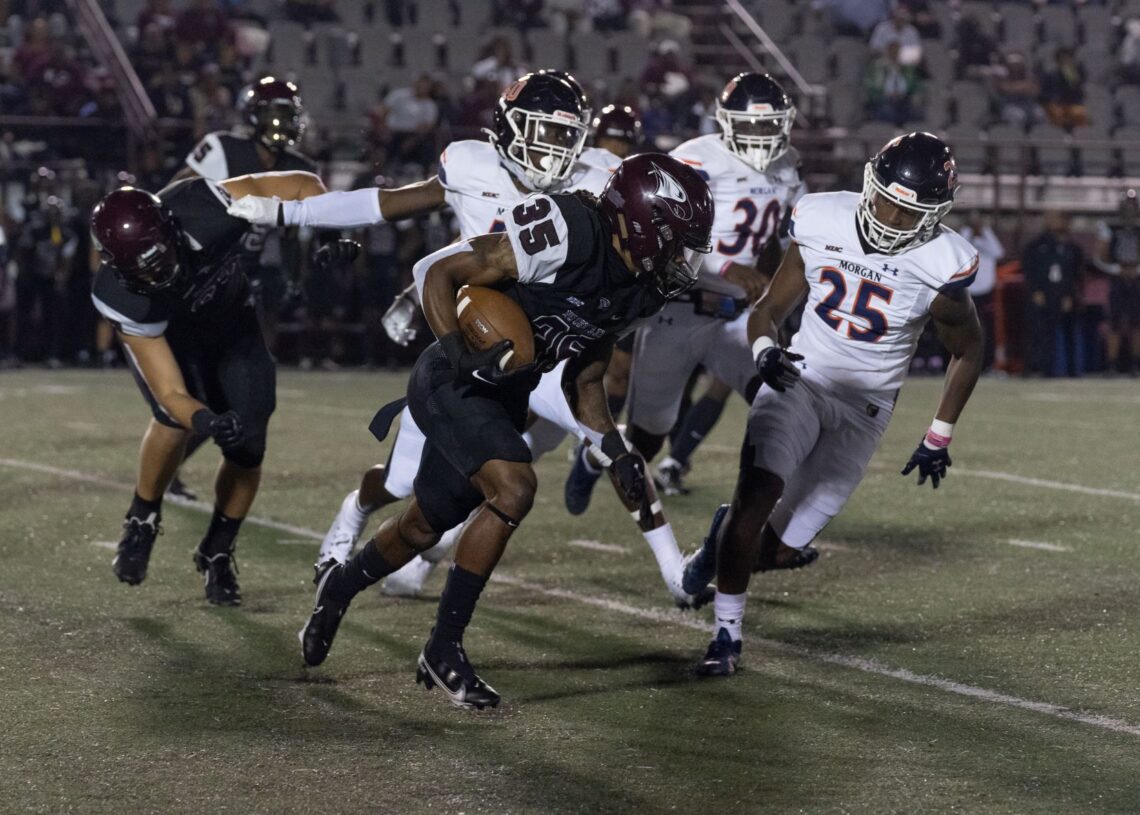The Southwestern Athletic Conference (SWAC) has 12 members.
The Mid-Eastern Athletic Conference (MEAC) has eight, six of which play football.
It’s not impossible for a Division I conference to succeed with less than 10 members, but in the Super Conference era, it’s certainly become tougher. So, what can the MEAC do to survive and thrive in this monopolized landscape?
Starting with the go-to solution, expansion is a tricky prospect because if the MEAC were to invite and add new members, the odds of any new members being HBCUs are very slim. When Hampton and Norfolk State joined the MEAC from Division II CIAA in 1995, the average operating budget for an I-AA (now FCS) program was $4 million.
That number has increased more than five times as we stand in 2023.
That would mean the hopes that some MEAC observers and alumni have of adding more from the Division II ranks (Virginia State, Bowie State from the CIAA and Kentucky State from the SIAC) are just that at this point.
It’s a huge ask for programs that have been at the same level for generations to step up and compete at a level that has turned into an arms race, whether you’re a Power 5 or a mid-major.
HBCU realignment hasn’t always worked
For every success story (North Carolina Central), there are two or more (Winston-Salem State, Savannah State) who were forced to be honest about the reality of finances and competition.
As for expanding outside of the HBCU realm, that worked for the CIAA with Chowan for a brief spell. But the Hawks eventually left for a conference more in line with their athletic and demographic interests.
Teams freely leave conferences all the time (as we’ve seen with the exodus of Hampton, North Carolina A&T, FAMU and Bethune-Cookman in a three-year span), but the MEAC couldn’t afford to add members with their eyes already on another league.
Another option people have been clamoring for is restarting the football program at the University of Maryland Eastern Shore.
That would be a mistake as well because when UMES dropped football at the end of the 1979 season, it was taking up 85 percent of the school’s athletic budget. The early years of Title IX required the school to rightfully consider the budget for women’s athletic programs as well as the rest of the men’s programs.
If $99,000 was too much to run a football program in the late 70s, you could probably guess that not much has changed in the subsequent years since.
Money talks and as HBCUs are faced with severe underfunding and, honestly, a lack of donor support, adding football (and most other sports for that matter) remains a tall task.

There are risky but reasonable options to explore
There are two radical solutions that have been floated around that could have merit, though these would require a huge break from tradition.
One would be to enter a football-only partnership with another Mid-Atlantic/Eastern Seaboard conference. The Ohio Valley Conference and Big South Conference have such a partnership, one that claims Tennessee State University as a member.
As several niche sports at HBCUs are a part of different conferences, it wouldn’t be unusual for the MEAC to partner with another conference. They already have a good working relationship with the Northeast Conference, which has taken on the four remaining MEAC baseball schools through the 2024 season. It wouldn’t be a desirable option, but likely the safest and most financially feasible one at this point.
The other radical solution is one based on strength in numbers, solidarity, and pride. That, of course, would be joining forces with the SWAC to form the only HBCU D-1 Super Conference. There would be 20 HBCUs all working together for the same common cause – athletic success while providing a culture and atmosphere that is second to none.
There was an old rap record called “We’re all in the same gang,” and that certainly applies to the MEAC and SWAC. The outsiders in a college sports world that is predicated on money, prestige, and networking.
Forming a partnership with each other could help inspire more Black student-athletes to consider HBCUs for their college experience, as well as improve the overall health of each institution.
Where does the MEAC go from here?
Of course, these are just options, suggestions, and musings. The true call of the MEAC’s future will be answered by its presidents/chancellors and commissioner Sonja Stills, who certainly seems up to the task.
The MEAC started in 1970 with the idea of competitive balance, regional rivalries and a fresh start. As the conference enters its 53rd season, it is indeed a pivotal one. With the ground shifting beneath its feet daily, the MEAC will have to come up with a plan to survive and thrive. Can they do it? Absolutely.
What will that plan look like? Time will tell.








